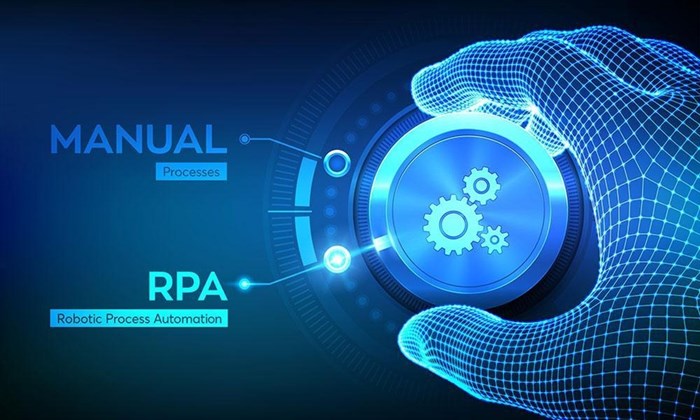
Before jumping right into the process of RPA, let us quickly go through what is RPA. Robotic Process Automation, also known as RPA, is a software technology developed with the help of Artificial Intelligence (AI) and Machine learning technology, which designs Robots (bots), which helps in carrying out easy day-to-day tasks independently without any human interference. It is a kind of technology that reduces time and creates no error outcomes for all day-to-day, repetitive, or mundane tasks. It does it’s assigned work independently, which previously required humans to perform manually.
Now that we brushed up on what RPA is, let us dive into the process of RPA, or we could say implementation of RPA. What all steps are considered while implementing RPA, how the process is carried out, are a few of the questions which we would answer through this blog.
Alao Read: Best RPA (Robotics Process Automation) Tools 2021
What is The Process Of RPA?
Automation technology has been a significant part of the business for the last decade. Still, in recent times, RPA technology has accomplished an exceptional degree of complexity while ensuring ease of use and its benefits have become much more critical during the Covid-19 pandemic. It is no longer a tool used purely to promote the automation of basic and repetitive IT activities. RPA develops and puts together other innovations – such as artificial intelligence and machine learning (ML); new opportunities are being explored. Let us see the process of how RPA is implemented.
Planning Phase
This is the first stage of the RPA process/implementation, where the organization needs to schedule and list all activities that are expected to be automated by RPA. When preparing for such tasks, we should make sure that these tasks are routine, rule-based, etc. The final step for this point will be to finalize the implementation of the RPA with a set timetable.
Development Phase
This is the second stage where we are designing the automation workflow, which we initially agreed in the planning stages. As the criteria are set in the planning process itself, this phase will have comparatively lower pressure and will be implemented rapidly.
Testing Phase
This is the most crucial phase of all. Here we test run the automation that we decided and developed from the first and second phases. Running a test run would help in knowing and rectifying any unforeseen changes or errors which may or may not have occurred during the development phase.
Support and Maintenance Stage
This is the last stage of the process that ensures that the software built is continuously updated with a smooth implementation against its customers/services. This will be secured at regular intervals by the IT team or RPA professionals. This process also helps in the immediate resolution of defects.
Benefits
RPA, also known as software robotics, is a technology that automates repetitive, rule-based tasks previously performed by humans. It involves using software robots or AI workers to execute tasks such as data entry, processing transactions, or moving files.
-
Increased efficiency and productivity: RPA can process tasks much faster than humans, reducing processing time.
-
Cost reduction: By automating repetitive tasks, companies can save on labor costs.
-
Improved accuracy: RPA eliminates human error, leading to higher data accuracy.
-
Enhanced compliance: RPA can follow strict rules and regulations, ensuring compliance with industry standards.
-
Scalability: RPA can be easily scaled up or down depending on the organization's needs.
Potential Use Cases
-
Finance and accounting: Automating tasks such as invoice processing, account reconciliation, and expense management.
-
Human resources: Streamlining employee onboarding, benefits administration, and payroll processing.
-
Customer service: Automating tasks such as handling customer queries, updating customer information, and processing refunds.
-
Supply chain management: Automating inventory management, order processing, and shipment tracking.
Key Players in the RPA Market
-
UiPath
-
Automation Anywhere
-
Blue Prism
-
IBM
Top Industries Adopting RPA
-
Banking and financial services
-
Healthcare
-
Manufacturing
-
Retail
-
Telecommunications
Salaries of RPA Professionals
-
RPA Developer: $70,000 - $100,000 per year
-
RPA Analyst: $60,000 - $90,000 per year
-
RPA Architect: $90,000 - $150,000 per year
-
RPA Project Manager: $80,000 - $120,000 per year
Please note that these salary figures are approximate and can vary based on factors such as location, experience, and company size.
Top Hiring Companies in the RPA Field
-
IBM
-
Deloitte
-
Accenture
-
Capgemini
-
Cognizant
Conclusion
Robotic Process Automation helps in the functionality of doing repetitive tasks without any human interference, or we could say doing it manually. Considering the said business’s impact is a crucial checkbox to be ticked before the implementation of RPA. A proper selection of tools and then moving forward towards the stage of the RPA process is a standard procedure to be made by the company. The method of RPA includes 4 phases, namely, Planning, Development, Testing, and Maintenance. The successful completion of these four steps would lead to a successful implementation of RPA in a company. These are small in numbers but are the most crucial phases which the company has to achieve success, and only then would the RPA can derive the expected results set by the companies.






course.pngM.jpg)
COMMENT